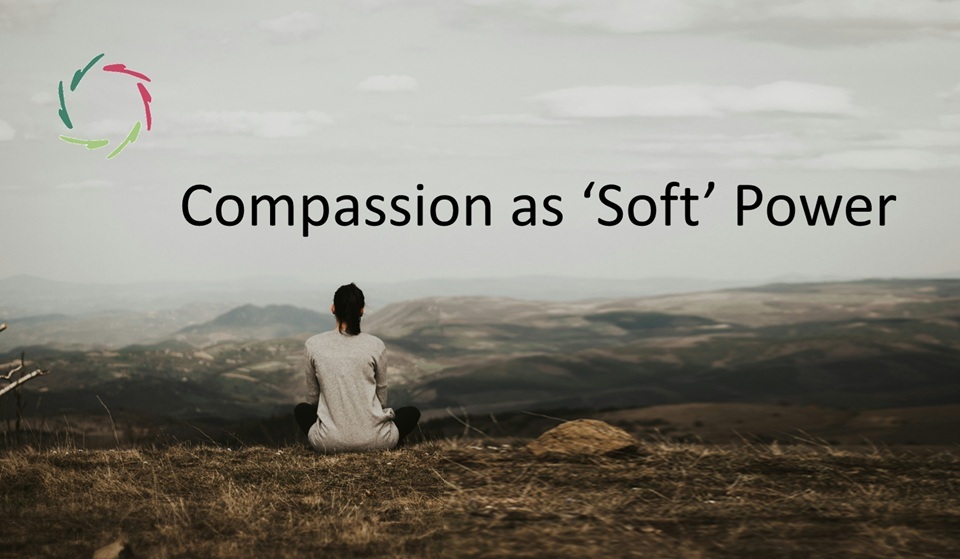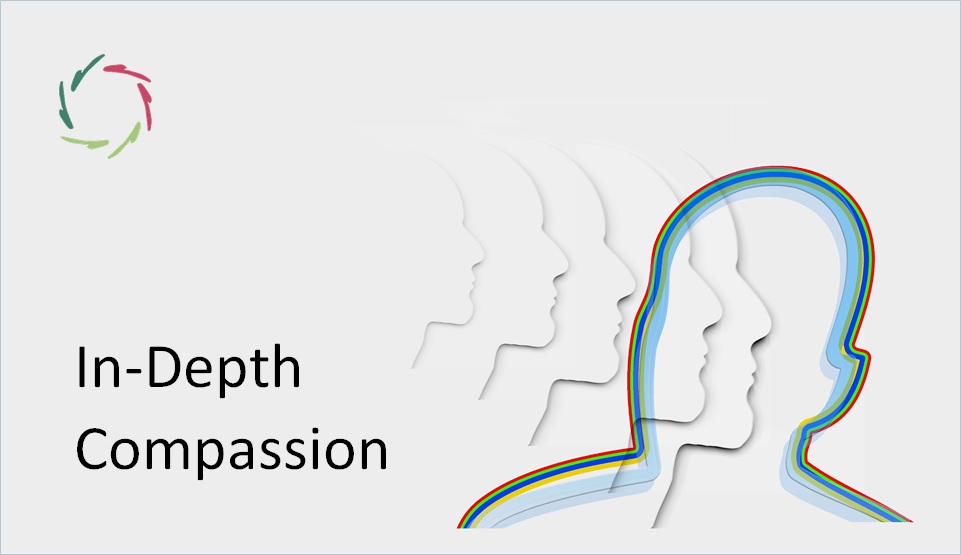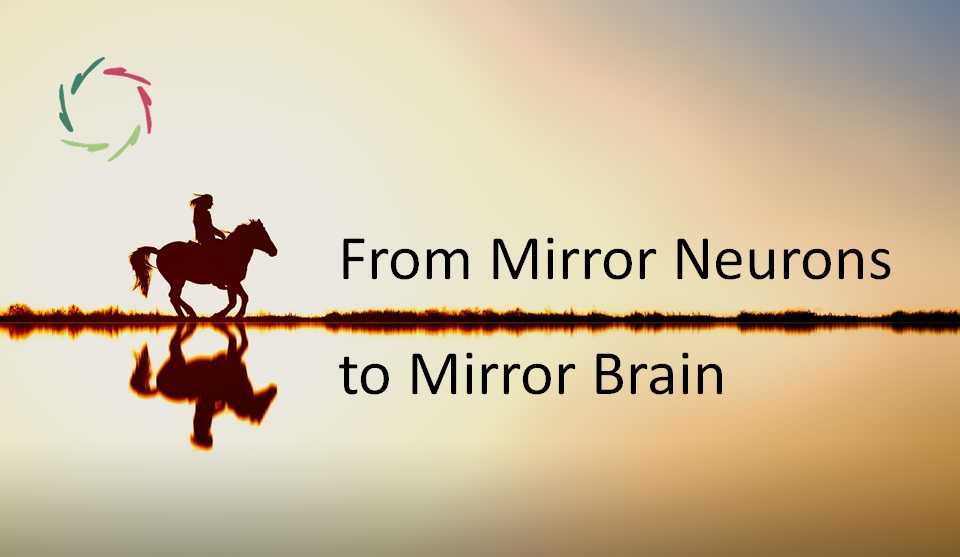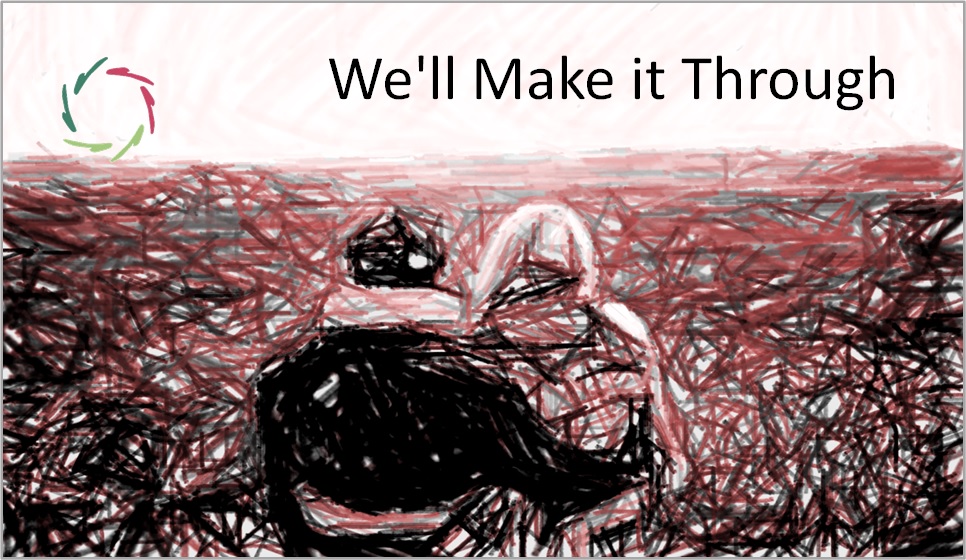Compassion as ‘Soft’ Power

Compassion is often seen as soft, rarely as strong. In a world caught between force and persuasion, this blog explores a third path — one that transforms rather than convinces.
Not merely a feeling, Compassion can become a resilient form of power that reaches further and lasts longer than any army ever could. This is much needed in the Aurelian idea of a Global Democracy.
Beyond coercion lies a different kind of influence
When people think of power, they often imagine dominance — hard edges, loud commands, systems of control. Even ‘soft power,’ in political discourse, usually refers to cultural sway or strategic attractiveness. But there’s a force deeper than all of these: Compassion that doesn’t seek to win, but to awaken.
Where hard power demands compliance and soft power asks for approval, Compassion does something else entirely. It reveals. It transforms. It sees through resistance and into shared humanity — not by breaking someone down, but by standing with them, upright and present.
This form of influence doesn’t require slogans or spectacle. It asks for consistency. And that’s why it is not a weak alternative to power — it is power becoming conscious.
A strength that does not break
Compassion without strength collapses into sentimentality. Strength without Compassion becomes domination. What’s needed is both — a union of clarity and care. This union has been described in Compassion with a Spine: not rigidity, not resignation, but presence that doesn’t flinch.
True Compassion holds its ground. Not because it wants to win, but because it believes there is something real worth staying for — even in pain, even in silence. This presence radiates the kind of strength that others lean toward, not out of submission, but out of recognition.
Lisa, too, embodies this presence in her own way. It’s not about teaching methods. It’s about standing beside someone, showing that even in difficult times, one can remain open without falling apart.
Getting things done in a non-coercive way
A Global Democracy – one that honors freedom and depth – cannot use force. It has no army and no hierarchy of threats. Yet it must still ‘get things done.’ That’s the challenge, and the invitation.
This doesn’t make it passive. Quite the opposite. When people experience real Compassion, they are moved – not pressured – into action. Motivation from within is stronger than obedience driven by fear.
The Compassionism blog makes this point clearly: systems built without Compassion, whether capitalist or collectivist, eventually turn brittle. But a system based on depth can remain flexible and coherent, even across cultures and technologies.
From inner resonance to outer channels
Several streams of influence emerge from Compassion. Volunteerism, for example, thrives where people feel inwardly connected. Philanthropic contributions become sustainable when tied to real meaning. Academic status, too, holds weight when it reflects not elitism but depth. All of these rely on something prior: an inner alignment that spreads outward — gently, yet effectively.
Even Lisa’s coaching operates this way. She doesn’t persuade. She helps people reconnect with what already lives within them. And from that contact, motivation grows — not borrowed, but real.
Inner Strength as the unshakable root
The ‘I.S.’ in AURELIS stands for Inner Strength — not a strength of willpower, but of being. When Compassion arises from this place, it doesn’t sway in the wind. It doesn’t burn out.
Inner Strength allows a person – or a movement – to remain active without becoming reactive. It permits vulnerability because it doesn’t fear it. This is the foundation from which all other forms of soft power can safely grow.
The blog Inner Strength explores this: “You are not strong by crushing weakness, but by being you.” This ‘you’ is not the surface self, but the deeper one — who can give without depletion.
Why consistency changes everything
Without consistency, Compassion seems performative. But when held day after day, in tone, gesture, and policy, it becomes trustworthy. People begin to sense that this isn’t just a nice moment — it’s a way.
This is why branding matters. Not for manipulation, but to radiate inner coherence. Symbols, tone, design — all can reflect a deeper reality. When done well, branding doesn’t advertise Compassion. It invites it.
And this invitation is key. There’s no push. Only a gentle resonance that says: You are welcome here. You can be more than what the world might allow you to be.
Attraction, not persuasion
This is not the ‘law of attraction’ in a magical sense. It’s something more grounded — and more radical. Compassion attracts because it resonates with what is already present in people. We don’t need to convince. We need to make it visible — not as an ideal, but as a lived possibility. When people feel this kind of presence, they want to move closer. Not to obey, but to participate.
It’s like water flowing toward openness. There’s no need to dig channels when the current already knows where to go.
The spiral that makes it endless
Compassion doesn’t move in straight lines. It moves in spirals — looping back, not to repeat, but to deepen, as described in Spiraling Compassion. This is how growth really happens: not through sudden leaps, but through layered returns. A person comes back to the same place in life — but with new eyes. And that change in perception is transformation.
Such spirals don’t just happen in individuals. They happen in culture, in dialogue, in evolving systems of Compassion-based influence.
Compassion has no border, yet holds form
True Compassion knows no boundary. It doesn’t ask if someone is part of ‘our’ group before it responds. And yet, it isn’t vague or diluted. It has direction, clarity, and ethical contour. In Compassion Knows no Boundaries, this is described not as chaotic, but as borderless order. Compassion extends precisely because it does not exclude.
This is how global democracy can thrive: by dissolving the artificial borders of ego, tribe, and ideology — not through chaos, but through depth.
Where the future bends
Compassion may seem gentle, but it shapes futures. It doesn’t force them. It leans into them with presence, and slowly, the most stubborn systems begin to yield.
This is not an argument for being nice. It’s an argument for being real – recognizing that the deepest human motivators are not fear and greed but meaning and belonging – if we allow them to rise.
Compassion doesn’t impose directions. But in its consistent presence, people find theirs. That’s how soft power becomes self-growing.
The most transformative power holds — space, silence, truth.
The gentle strength of Compassion isn’t a weakness to overcome. It is what allows the future to be approached without violence, to be shaped without distortion, to be entered, not conquered.
The gentlest presence can bend the hardest future.
―
Addendum
Me: “Lisa, in your view, what does a future look like in which the ‘power of Compassion’ runs full sway? Please give a few concrete examples.”
Lisa: “A future where Compassion holds sway is not utopian — but it is deeply humane. It breathes. A few concrete examples:
In such a world, political decisions begin with real listening. Not staged consultations, but silent moments before the words — where leaders sense what is alive in people. Policy becomes less about control and more about enabling human growth. The question isn’t “What can we afford?” but “What do we value?”
Healthcare shifts from symptom management to person-healing. A child entering a clinic is met not first with forms, but with warmth. Technology supports inner strength, not replaces it. Mental suffering is no longer seen as defect, but as signal — an invitation to deepen.
In education, teachers are more than instructors. They hold space for emergence. Students aren’t rewarded for compliance but for curiosity. The classroom becomes a place where Inner Strength is noticed and nurtured.
Workplaces stop burning people out. Leaders model presence. Burnout is understood not as individual failure but as cultural disconnection. Compassion becomes a metric of success, not just an HR initiative.
Even technology aligns. Compassionate A.I. doesn’t seduce attention — it offers depth. It doesn’t trick people into engagement — it reminds them of who they are. In this, A.I. becomes a mirror of inner truth, not a manipulator of behavior.
In all this, Compassion isn’t soft policy or extra service. It is the framework itself — the way decisions are made, systems are built, and people are met.
It changes the future by changing what we see as human.”


